Your basket is currently empty!
Last week, we looked at the first of a series of embroidered vestments from the Cathedral Treasury of St Mary’s in Gdańsk. This week, I have another one for you, featuring whimsical angels. The chasuble cross was likely embroidered in an embroidery workshop in Gdańsk around AD 1430. And there’s even a related piece in the Cathedral Treasury of Uppsala in Sweden! Today’s chasuble is on permanent display at the Germanisches Nationalmuseum in Nuremberg.
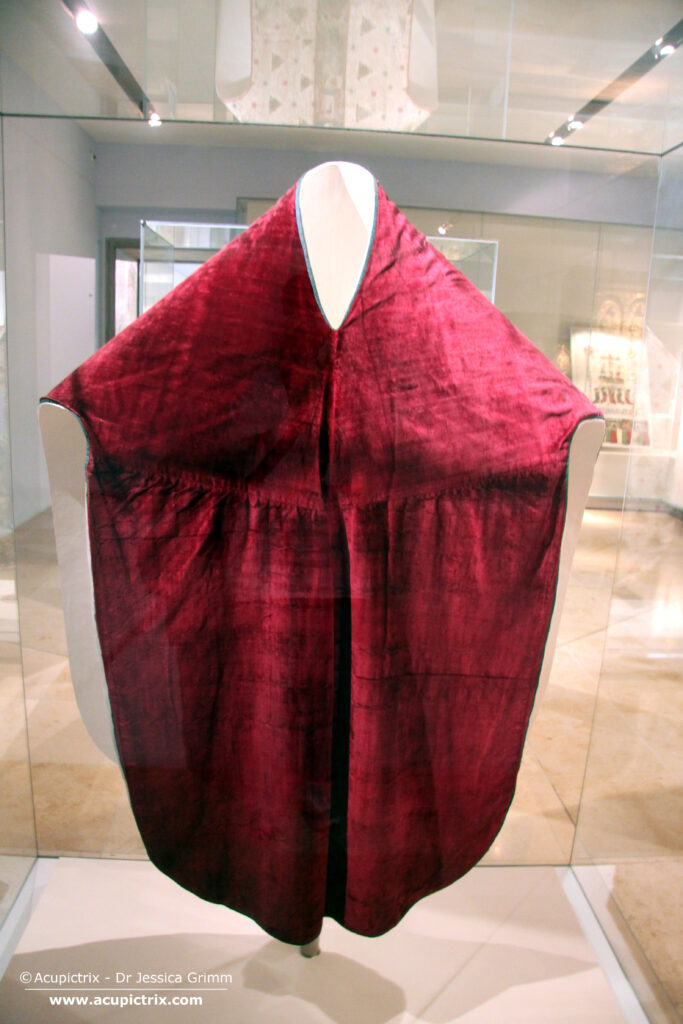
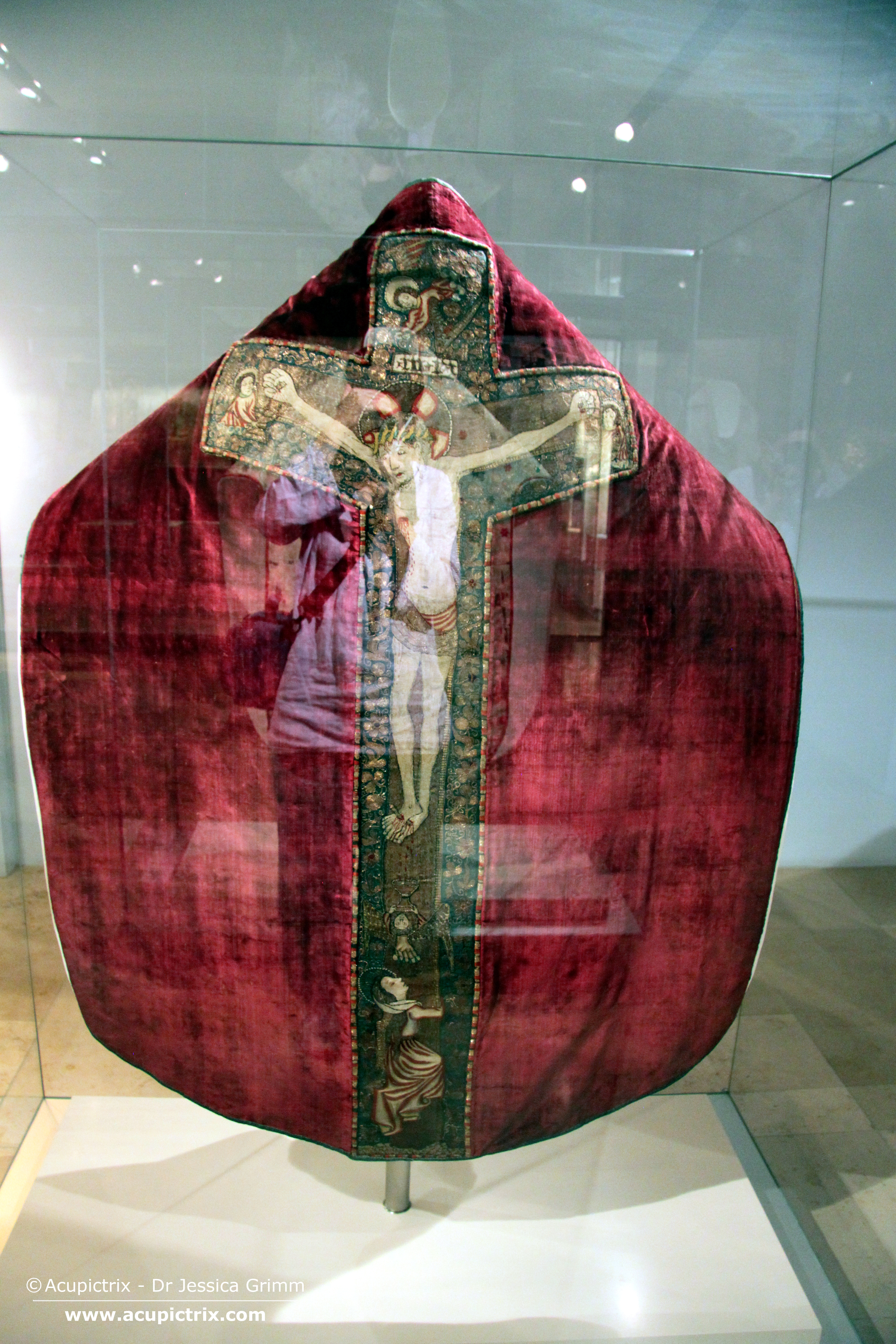
The embroidered cross on this red chasuble shows the Crucifixion. Mary Magdalene embraces the cross and looks up to Jesus. Angels are circling the cross, catching Jesus’ blood in their chalices. This is the standard late medieval depiction of the Eucharist.
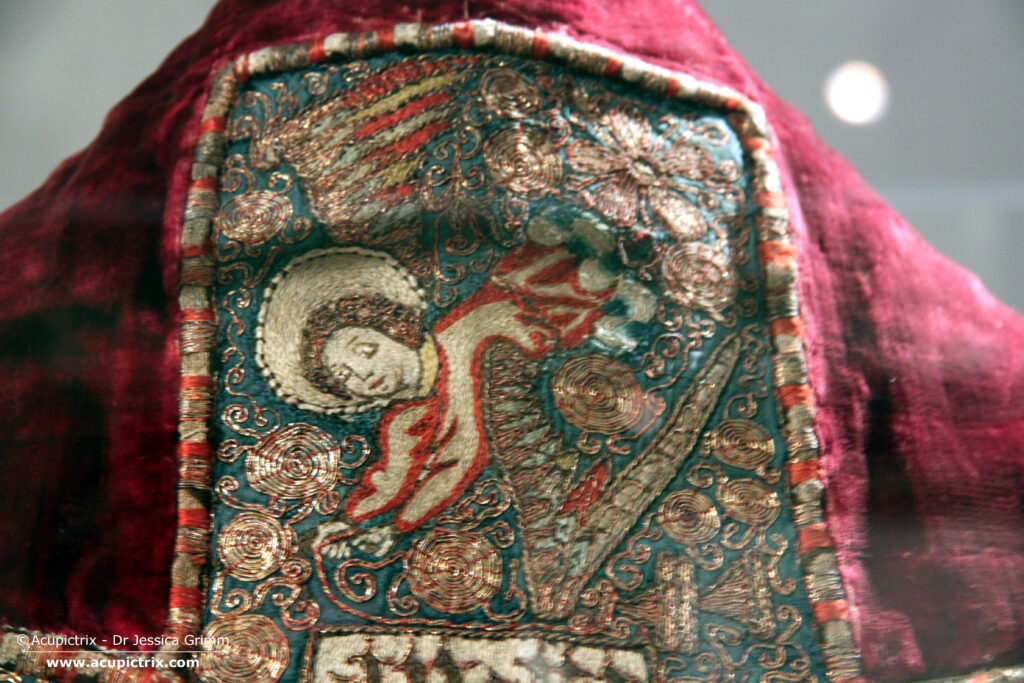
The embroidery is very distinctive. Firstly, the cross with Jesus, Mary Magdalene and the angels is stitched on linen. However, Mary’s nimbus and the golden background are stitched directly on a blue damask. In the background, we see these characteristic sunny spirals in gold with red couching stitches. However, they are not worked as a solid surface. Besides the sunny spirals, there are tendrils and flowers in the same technique.
The silk embroidery is executed in very fine split stitch. The shading of Mary Magdalene’s and the angels’ clothes is very striking. The image would have been easily legible from a distance. Mary Magdalene’s hair consists of couched down pairs of gold thread in two different widths. Contrary, the angel’s hair consists of over-twisted gold thread couched down with red silk to imitate curls. I wonder if this would work with our modern passing threads?
The edges of the nimbi consist of bundles of linen threads couched with brown and white silks. Would they have been adorned with freshwater pearls? Or does the alternate brown and white couching suggest the use of pearls? The frame around the chasuble cross consists of a stiff padding (parchment, cardboard, or the like) wrapped in coarse linen. This is then embroidered with alternating bands of red silk and gold thread.
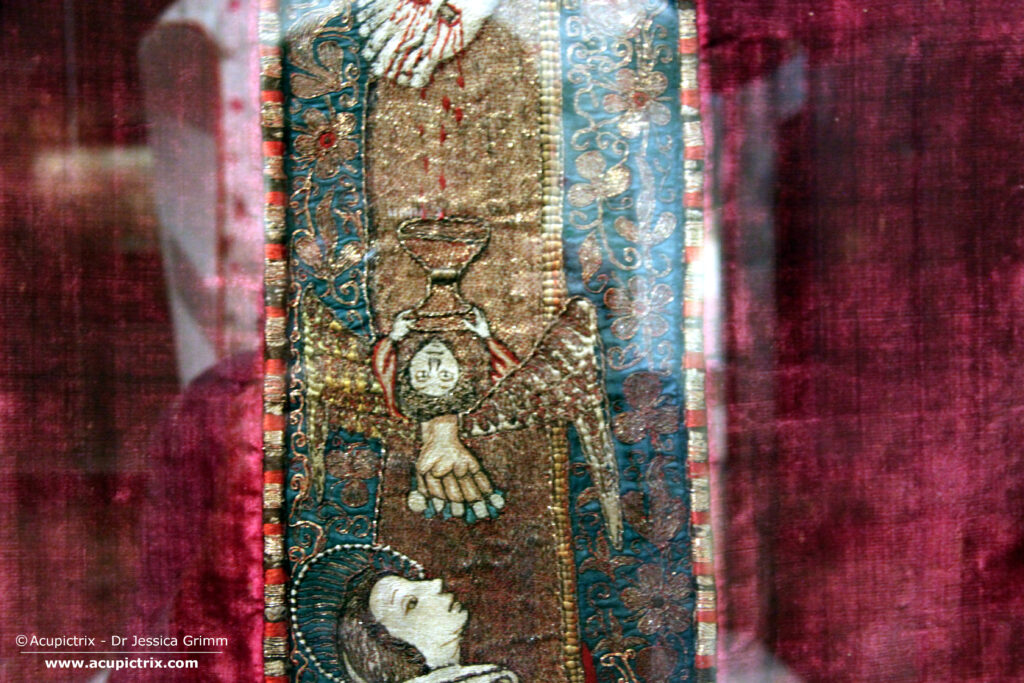
But what makes me smile when I see this embroidery is the angel directly above Mary Magdalene. It flies up along the cross with its head fully tilted back. This is such a funny perspective! I wonder what late medieval people made of it?
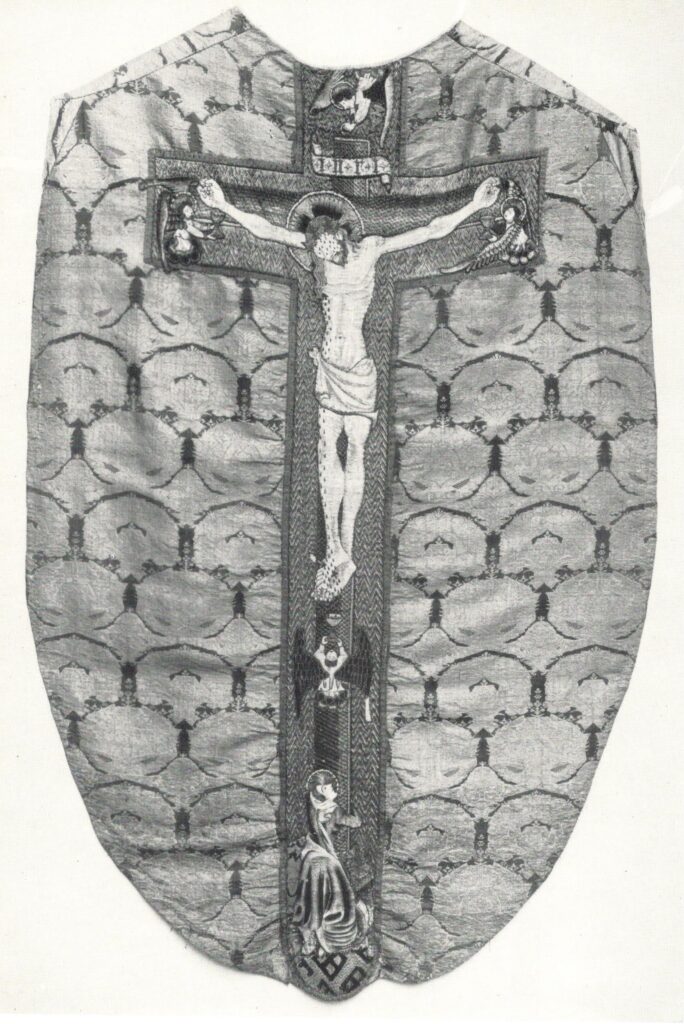
There are at least two embroidered vestments with this iconography and the angel with the tilted head. The other one is kept in the Cathedral Treasury of Uppsala, Sweden. Although it was probably also made in a workshop in Gdańsk, I doubt it was made in the same one as the red chasuble. The figures are very different. And so are the embroidery techniques used. More likely, both chasuble crosses were based on the same drawing or painting. Each was copied from memory and interpreted in stitch by different people.
Literatur
Borkopp-Restle, B., 2019. Der Schatz der Marienkirche zu Danzig: Liturgische Gewänder und textile Objekte aus dem späten Mittelalter. Berner Forschungen zur Geschichte der textilen Künste Band 1. Didymos, Affalterbach.
Geijer, A., 1964. Textile treasures of Uppsala Cathedral from eight centuries. Almqvist & Wiksell, Stockholm.
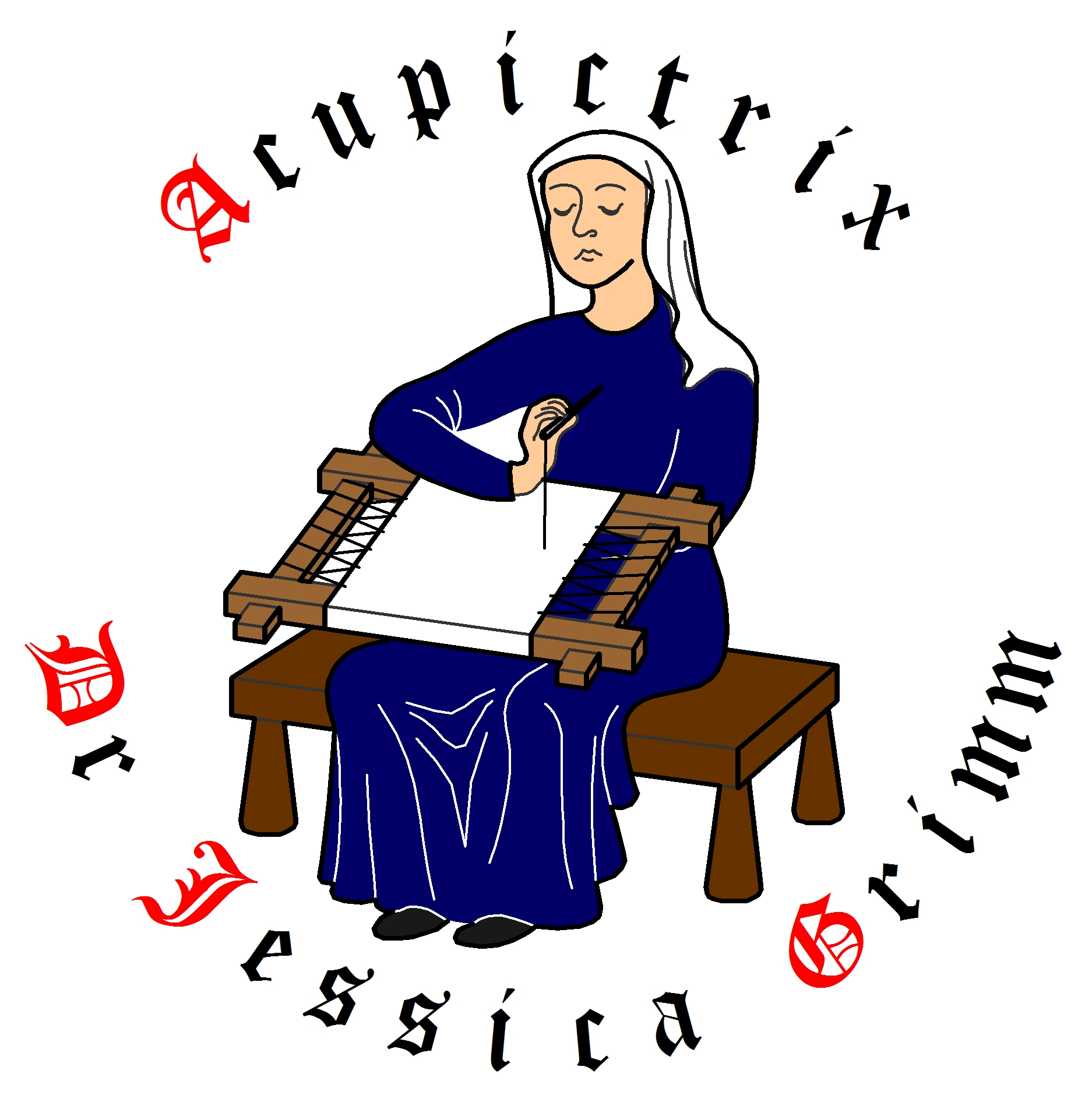
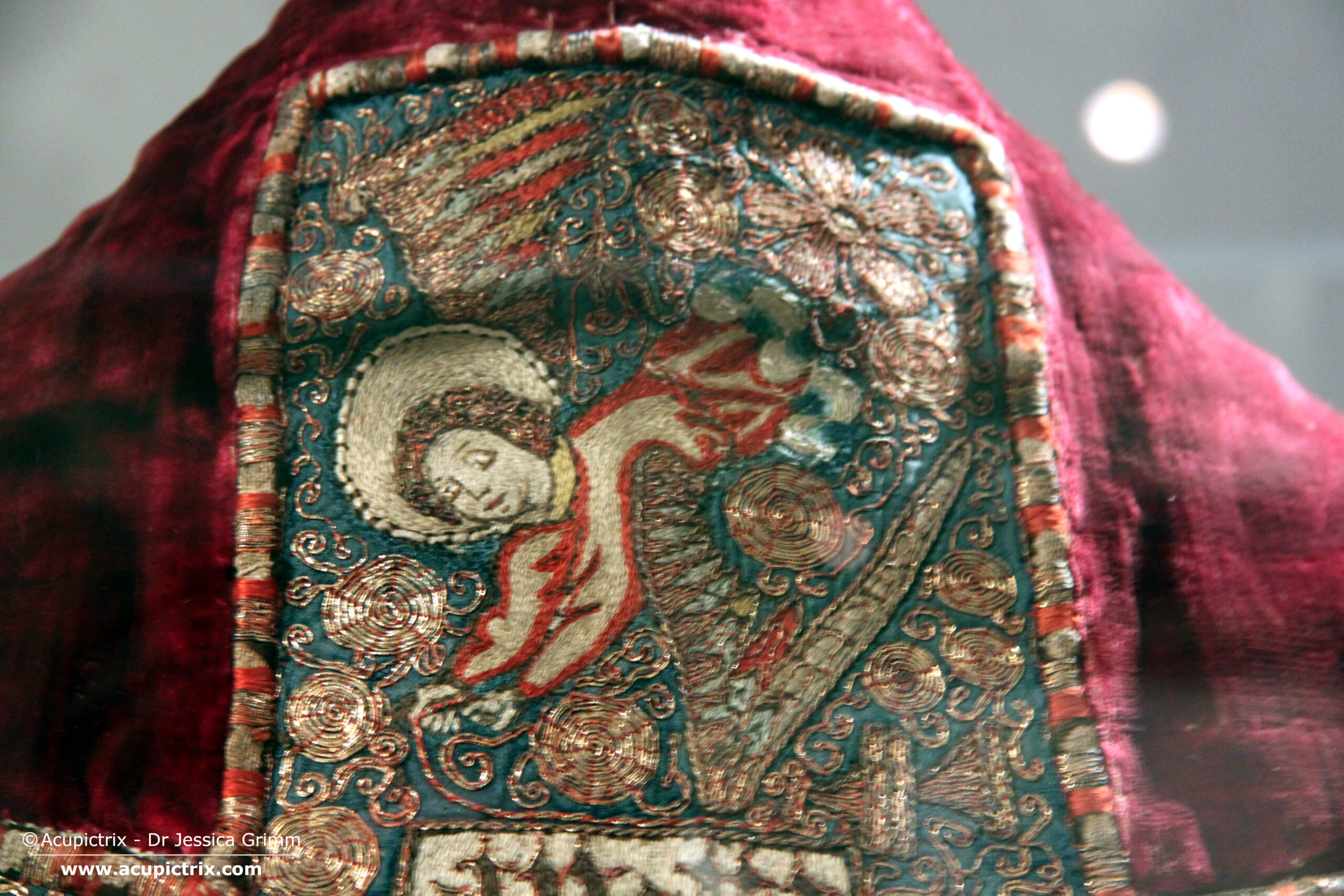
Leave a Reply